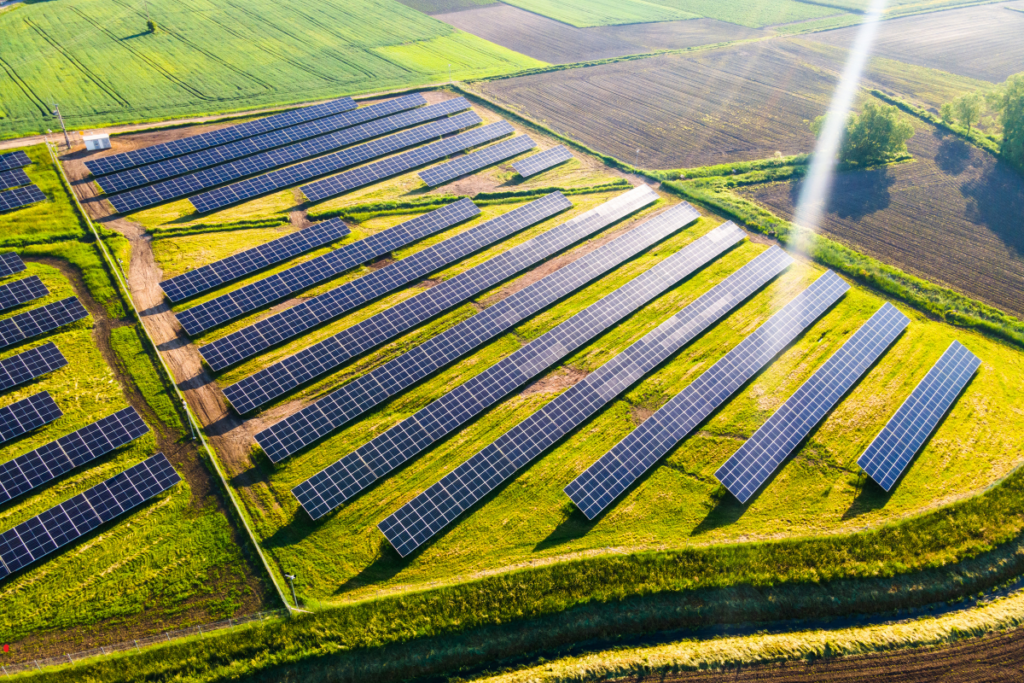String Inverters vs. Central Inverters
Choosing the Optimal Solution for Solar Farms
Inverters convert the direct current (DC) generated by solar panels into alternating current (AC) that can be used in the power grid, playing a crucial role in photovoltaic installations. Choosing the right inverter optimizes the performance and cost-efficiency of solar farms. Among the available options, string inverters and central inverters stand out. Understanding the differences between them and their specific features helps in making the best decision.

What Are String Inverters and How Do They Work?
String inverters, also known as chain inverters, are commonly used in small and medium-sized photovoltaic installations. You connect solar panels in series to form strings, with each string connected to a separate input on the string inverter. This means one string inverter handles several chains of solar panels.
Key features:
Flexibility: String inverters allow for various system configurations, which is advantageous for installations on roofs with different angles and orientations.
MPPT Optimization: Modern string inverters are often equipped with Maximum Power Point Tracking (MPPT) technology. Optimizing the performance of each string of panels and minimizing energy losses due to shading or differences in panel performance.
Modularity: You can add or remove individual strings without affecting the entire system.
What Are Central Inverters and How Do They Work?
Central inverters, designed for large, industrial, and commercial photovoltaic installations, gather all the solar panels into larger strings, which are then connected to a single central inverter.
Key features of Central Inverters
Economy of Scale: Large installations find central inverters more cost-effective because they have a lower cost per unit of power compared to string inverters.
Simplified Installation: Central inverters can simplify installation by reducing the number of devices and connection points, leading to lower installation costs and less energy loss.
System Management: Centralized management and monitoring of the system can be beneficial for large installations, enabling easier servicing and diagnostics from a single point.
Key Factors in Choosing an Inverter for Solar Farms
System Size: Small and medium installations typically benefit from string inverters due to their flexibility and ease of monitoring. Large solar farms often choose central inverters due to lower cost per unit of power and simplified installation.
Installation Conditions: Installations on roofs with varying angles and orientations may require the flexibility offered by string inverters. In open fields, where you can uniformly position panels, central inverters may be more efficient.
Shading: If the installation is subject to shading, string inverters with MPPT technology can better optimize the performance of each string of panels. Minimizing energy loss.
Costs: Analyzing the costs of installation, maintenance, and monitoring is crucial. Central inverters can be more cost-effective in large installations, while string inverters may be more advantageous in smaller systems.
Which Solution is More Beneficial?
There is no definitive answer to whether string inverters or central inverters are better—it depends on the specific conditions and goals of the installation. Here are some key differences:
- String Inverters: Provide greater flexibility and operate more efficiently in systems exposed to variable conditions, such as different roof angles or partial shading. Monitoring individual panel strings is also easier with string inverters.
- Central Inverters: More cost-effective for large installations, where lower cost per unit of power and simplified installation are significant. Centralized system management and monitoring are also easier.
Conclusion
Choosing the right inverter for a solar farm requires a thorough analysis of the specific conditions and requirements of the installation. String inverters and central inverters each have their unique advantages and disadvantages. Optimal solution depends on system size, installation conditions, shading impact, and cost analysis. Consulting with experts and carefully planning the system is key to maximizing the potential of solar energy.
Read more: 3 Largest Solar Parks in Europe



